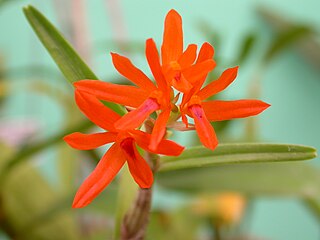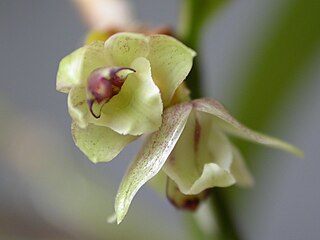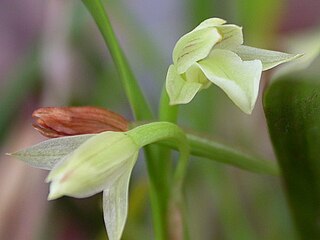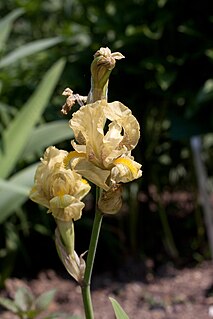
Pinctada is a genus of saltwater oysters, marine bivalve mollusks in the family Pteriidae, the pearl oysters. These oysters have a strong inner shell layer composed of nacre, also known as "mother of pearl".

Isochilus is a genus of orchids with 13 recognized species. They are lowland epiphytes mainly found in Central America, from Cuba and Mexico to Argentina.

Morelia imbricata is a large snake found in southern regions of Western Australia and western South Australia. A member of the python family, it is commonly known as the Southwest carpet python.

The hawksbill sea turtle is a critically endangered sea turtle belonging to the family Cheloniidae. It is the only extant species in the genus Eretmochelys. The species has a worldwide distribution, with Atlantic and Indo-Pacific subspecies—E. i. imbricata and E. i. bissa, respectively.

Scaphyglottis is a genus of orchids native to Mexico, Central America, northern South America and parts of the Caribbean. The current concept of this genus is the result of combining several genera which have been described at various times. The concept is characterized by the growth habit: not only are new pseudobulbs added at the base of the old ones, but new pseudobulbs also grow at the apices of the old ones. Many species are quite similar and difficult to distinguish, but some are clearly distinct. A few have showy colors. The genus comprises nearly 70 species.

Scaphyglottis bidentata is a species of orchid found in the American tropics from Costa Rica to northern Brazil. It is the type species of the genus Hexisea, and was published before the generic epithet Scaphyglottis. In a reversal of the usual rules for taxonomy, the genus Scaphyglotts was conserved against Hexisea when the two genera were combined. The generic epithet Hexisea was retained as correct, however, in discussions limited to the species which had traditionally been placed in Hexisea.

Scaphyglottis boliviensis is a species of orchid found from Central America to tropical South America.

Scaphyglottis conferta is a species of orchid endemic to Peru.

Scaphyglottis crurigera is a species of orchid found from Mexico to Ecuador.

Scaphyglottis fusiformis is a species of orchid found from Costa Rica to tropical South America.

Scaphyglottis livida is a species of orchid found from Mexico to tropical South America.

Scaphyglottis longicaulis is a species of orchid found from Central America to northwestern Ecuador. It has been found as an epiphyte growing on Socratea exorrhiza in Panama.

Scaphyglottis micrantha is a species of orchid found from Central America to northwestern Ecuador.

Scaphyglottis modesta is a species of orchid native to the Neotropics. Habitats it is found in include the Atlantic Forest ecoregion in southeastern Brazil.

Scaphyglottis prolifera is a species of orchid native to the Neotropics.

Scaphyglottis reflexa is a species of orchid occurring from Grenada to Central America and tropical South America.

Scaphyglottis sickii is a species of orchid occurring from Grenada to tropical South America.

Scaphyglottis stellata is a species of orchid occurring from Central America to tropical South America.

Iris imbricata is a species in the genus Iris, it is also in the subgenus Iris. It is a rhizomatous perennial, from the Caucasus mountains, within Iran, Armenia, Azerbaijan and Georgia. It has broad, sword-like, yellow green or light green leaves, slender stem with branches, inflated and overlapping green spathes, and 2–5 yellow, pale yellow or greenish yellow flowers.

Petrophile imbricata is a species of flowering plant in the family Proteaceae and is endemic to southwestern Western Australia. It is a shrub with overlapping, needle-like leaves and oval heads of hairy cream-coloured flowers.



















